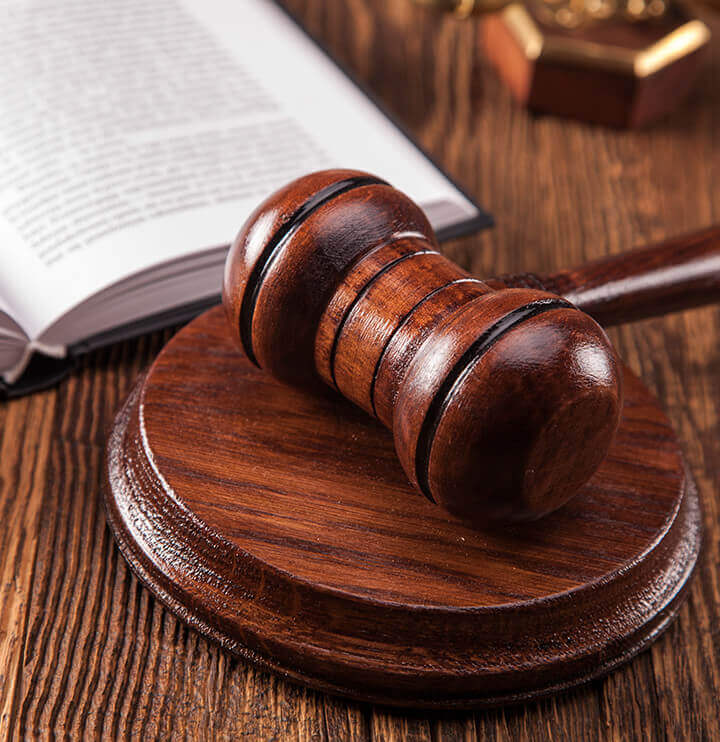- March 12, 2024
 When injury victims visit our law office, they want to know how the injury process works and what they can expect. We will explain that here and also cover some questions that are frequently asked by accident victims. If you or a loved one has been the victim of another’s negligent action, our Detroit personal injury lawyers can help you commence the compensation claim process. Contact us today at 248-286-8100 to book a free case review.
When injury victims visit our law office, they want to know how the injury process works and what they can expect. We will explain that here and also cover some questions that are frequently asked by accident victims. If you or a loved one has been the victim of another’s negligent action, our Detroit personal injury lawyers can help you commence the compensation claim process. Contact us today at 248-286-8100 to book a free case review.Why Choose Us to Handle Your Personal Injury Case?
At Goodman Acker P.C., we have over 35 years of combined experience handling personal injury claims and representing clients in Detroit and other parts of Michigan. We offer aggressive but compassionate representation and will walk you through the claims process. Our attorneys will answer all your questions and update you as your case progresses.
We are always available to clear any doubts about the claims process, so don’t hesitate to contact us.
We have a 99% success rate, and our clients frequently express satisfaction with our services. As one of Michigan’s trusted law firms, we will fight for you with all our resources and get you the maximum compensation. Call us today at 248-286-8100 to learn how we can help you.
How Does the Personal Injury Claim Process Work?
Each personal injury case has a distinct set of facts that affects the outcome and the victim’s compensation. However, the process involved is essentially the same and involves the following steps:
Hiring an Attorney/Initial Consultation
To begin any claim or lawsuit, you need a trustworthy personal injury lawyer in Detroit. Think of the legal landscape as a new frontier. Without a guide, you would not want to trek across unfamiliar territory, so why would you start a claim without an attorney?
In many cases, the key difference between receiving a fair settlement and nothing at all is the attorney’s influence and expertise. Therefore, the first step in the personal injury claim process is getting a lawyer. During the initial consultation with our attorney, you will answer these questions:
- How the accident occurred
- Who was involved
- Who may be liable for the accident
- The injuries sustained and their severity
- The treatment received for the wounds and for how long
- The amount spent treating the injuries.
After the initial consultation, we will provide you with an assessment of your case and advise you on how to proceed.
Investigate the Case
Once we take you as a client after the initial consultation, we will investigate the case. Depending on the case facts, we might need to visit the accident scene to take pictures and videos. In other cases, we will obtain the incident report from the appropriate authority. Our job also involves helping you identify all the parties involved and obtaining copies of your medical record.
Medical Treatment
While your case is pending, you must continue undergoing medical treatment until you’ve attained maximum medical improvement (MMI). Failing to do so and aggravating your injuries will affect how much you can recover as compensation.
Keep a medical journal of the treatment received, out-of-pocket expenses, and days you missed work because you were getting treated.
Demand Letter
If you were injured in a car accident, we will send a demand letter to your insurance company at this stage, as Michigan is a no-fault state. In other types of personal injury cases, the demand letter goes straight to the at-fault party’s insurance provider if they are insured.
The demand letter will contain the facts of the case and the amount you deserve as compensation and will be accompanied by the following:
- The police or incident report
- Pictures of property damage and injuries
- Medical bills and records
- Documentation of lost wages
- Receipts for out-of-pocket expenses.
The insurance company will review the demand letter and accept your settlement request or make a counteroffer. A counteroffer starts the negotiation stage.
Negotiations
Most personal injury claims end at this stage and do not go all the way to trial, especially if the counteroffer made by the insurance company is fair. However, this stage is often characterized by back-and-forths between the negligent party’s insurer and our Detroit personal injury lawyers. This is because insurance companies always start with low-ball offers. The negotiations will continue until both sides get to a figure they deem fair.
Settlement
If we present the offer made by the insurance company and you accept it, you will receive compensation. But, if the negotiation ends in a deadlock, the only other option is to file a lawsuit.
Lawsuit Filing
A lawsuit is usually the last option in personal injury cases. If the suit goes to trial, a jury will weigh the evidence and facts presented before awarding compensation. Once the lawsuit has been filed, it will follow these steps:
- Discovery: Your personal injury lawsuit is a two-sided affair. What does the opposition know that you do not? Is the insurance company planning on submitting key evidence you do not know exists?
The discovery process allows your personal injury attorney to share critical information, like interrogatories and depositions, with the opposing counsel and vice versa.
- Evaluation and Mediation: Even after a lawsuit has been filed, the court wants both parties to settle so the case does not get to trial. The court will set up a panel to evaluate the claim, determine how much compensation the plaintiff should receive, and present its findings to both sides. If the parties think the amount is fair and agree to it, the case concludes at this point.
- Trial Preparation and Courtroom Trial: If the mediation stage does not yield the expected result, the court will schedule the case for trial, which both parties will prepare for. Both parties will present evidence to support their claims during the trial before a jury. After examining the proof and applicable law, the jury will reach a decision binding on both parties.
- Judgment: The jury’s decision concludes the case, and the court bases its judgment on it. The insurance company cannot make a counteroffer to the amount awarded by the jury. This is why they prefer to avoid litigation, as the amount awarded by the jury may exceed what they would have been willing to pay in settlement.
How the Personal Injury Claim Process Works FAQs
Accident victims always have questions when they visit our law office to inquire about the personal injury claim process. Below are some of the recurring ones:
How Long Will My Personal Injury Case Last?
If your personal injury case ends at the negotiation stage, it might last weeks to months. But if it goes to trial, it might take years to conclude.
Can I Still Go to Court If I Accept a Settlement?
No. Accepting a settlement from the negligent party ends your case, and you can’t file a fresh claim even if the money is insufficient to cover your losses. The only exception is if the insurance company acted fraudulently and you can prove it.
What Do I Need to Make a Claim?
To make a personal injury claim, you must get a form from your insurer or write a demand letter to the negligent party and their insurer. State how the accident happened and include evidence to support your facts.
Will I Get More Money If I Go to Court?
You might get more money if you go to court, depending on the jury and whether they award exemplary damages. However, it is not guaranteed that you will have a higher award if you go to court. This is more likely when there are catastrophic, lifelong injuries.
Our Detroit Personal Injury Lawyers Can Help You Win
Were you or a loved one involved in an accident caused by another person’s negligence? If yes, our Detroit personal injury attorneys at Goodman Acker P.C. are here to help you get the maximum compensation. Call 248-286-8100 to schedule a free, no-obligation initial consultation.

